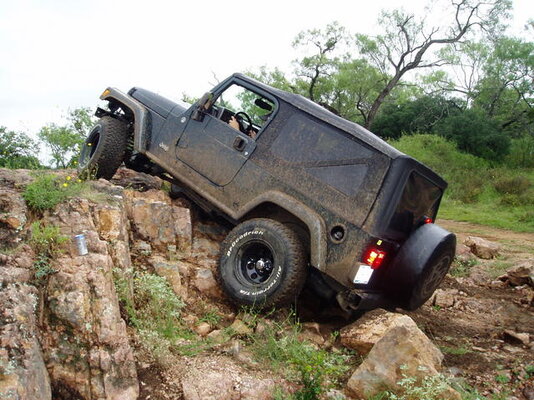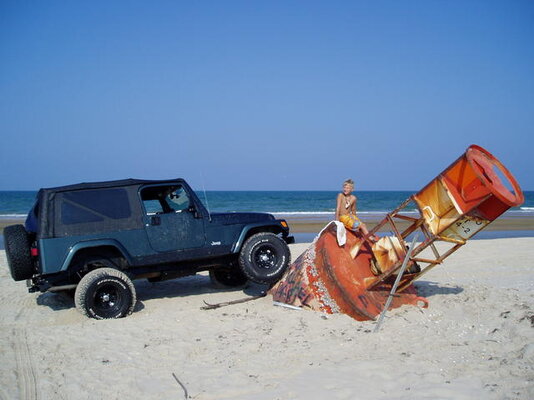tshelfer
0
- Joined
- Sep 4, 2009
- Messages
- 13,478
- Reaction score
- 2,847
- Location
- Centennial, CO
- First Name
- Tim
- Last Name
- Shelfer
I've never been stuck in the sand, but.......
I always worry. Next month, we're making our bi-annual pilgrimage to North Padre Island, which will include a run down beach to at least the 20-mile mark. We have a 4WD Grand Cherokee.
Padre is funny. You'll run for a couple of miles on hard packed sand, and then get into an area maybe 100-200 yards long where you're 8" deep in loose, churny stuff.
Last time we were there, we had a rare hairy moment when we nearly got caught in soft sand. I kept the wheels spinning and we made slow headway until we hit better traction, and had no further problems. Admittedly, my tread was a little thin then, and I currently have a brand new set of Cooper Discoverer ATP tires with a darned aggressive tread. So we're probably fine now.
That said, what are your recommendations to improve traction? Should I lower tire pressures for sand driving? How low?
Beyond that, if you DO get stuck, what are your recommendations for getting out, and what would you carry?
Any specific stories of your experiences?
I always worry. Next month, we're making our bi-annual pilgrimage to North Padre Island, which will include a run down beach to at least the 20-mile mark. We have a 4WD Grand Cherokee.
Padre is funny. You'll run for a couple of miles on hard packed sand, and then get into an area maybe 100-200 yards long where you're 8" deep in loose, churny stuff.
Last time we were there, we had a rare hairy moment when we nearly got caught in soft sand. I kept the wheels spinning and we made slow headway until we hit better traction, and had no further problems. Admittedly, my tread was a little thin then, and I currently have a brand new set of Cooper Discoverer ATP tires with a darned aggressive tread. So we're probably fine now.
That said, what are your recommendations to improve traction? Should I lower tire pressures for sand driving? How low?
Beyond that, if you DO get stuck, what are your recommendations for getting out, and what would you carry?
Any specific stories of your experiences?



 Feel free to hang out and lurk as long as you like. However, we would like to encourage you to
Feel free to hang out and lurk as long as you like. However, we would like to encourage you to  Keep your speed up in those loose stretches and you should be fine.....if you have a highlift Jack I would consider taking that too.....oh and don't take one of those 18" long pack shovels.....take a full sized one....if you end up using it you'll be glad you did.
Keep your speed up in those loose stretches and you should be fine.....if you have a highlift Jack I would consider taking that too.....oh and don't take one of those 18" long pack shovels.....take a full sized one....if you end up using it you'll be glad you did. 




